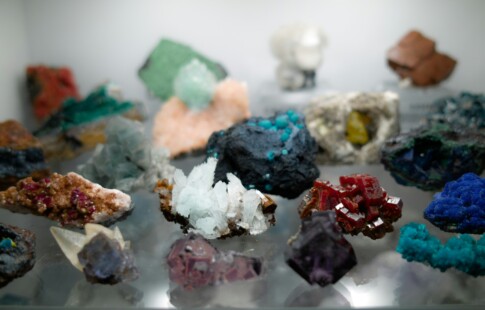
Cleaner Forms of Electricity Generation to Discover
We are reader-supported. When you buy through links on our site, we may earn affiliate commission.
Electricity generation remains a major driver of environmental harm when it relies on fossil fuels like coal, oil, and natural gas. These traditional sources release high levels of carbon dioxide and other greenhouse gases that accelerate climate change, pollute the air, and damage ecosystems worldwide. As the push for sustainability grows, reducing carbon emissions from the energy sector is urgent.
While most people are familiar with solar panels and wind turbines, the world of clean electricity generation goes far beyond those popular options. From ocean currents to geothermal heat and algae, a broad range of innovative, lesser-known technologies are making quiet but powerful strides toward a cleaner energy future. Exploring these alternatives expands public awareness and supports smarter decisions about energy consumption, investment, and climate action.
Geothermal Energy
Geothermal energy taps into the Earth’s natural heat, using reservoirs of hot water and steam deep underground to produce electricity and direct heating. These systems rely on hot rocks, fluids, and natural permeability to bring heat to the surface, which powers turbines or heats buildings. Geothermal power thrives in countries with active geological activity, where volcanic landscapes create ideal conditions for harnessing underground heat.
While large-scale geothermal plants dominate in these regions, the technology is steadily expanding into urban and residential areas through ground-source heat pumps and low-temperature systems. These smaller applications offer an efficient way to warm homes, schools, and offices with minimal environmental impact, which make geothermal a versatile and sustainable option.
Green Hydrogen
Green hydrogen stands out as a clean energy solution because of how it’s produced. This happens through electrolysis, which uses electricity to split water into hydrogen and oxygen. What makes it “green” is using renewable energy sources like solar or wind to power this process. Electrolyzers in green hydrogen systems produce no direct emissions, unlike traditional hydrogen production methods that rely on fossil fuels and emit carbon dioxide.
This positions green hydrogen as a sustainable fuel with enormous potential in sectors where cutting carbon is especially challenging. From powering heavy-duty trucks and industrial machinery to storing excess renewable energy for future use, green hydrogen offers a flexible and eco-friendly option that supports the shift toward a low-carbon economy.
Tidal and Wave Energy
Electricity generation from marine energy comes in two distinct forms — tidal and wave energy — each harnessing different types of ocean movement. Tidal energy systems rely on predictable sea-level changes due to the gravitational pull of the moon and sun. They typically use underwater turbines in narrow channels to capture water flow. In contrast, wave energy captures the surface motion of ocean waves using floating devices or oscillating structures that convert movement into power.
Pilot projects worldwide test new marine energy technologies, from tidal kites to modular wave converters. While marine energy holds exciting potential due to its consistency and vast resource base, challenges such as high costs, harsh ocean conditions, and limited infrastructure make scaling difficult. Still, ongoing innovation and investment suggest a growing role for tidal and wave systems.
Biomass and Biogas
Biomass electricity generation transforms organic waste — like food and animal waste — into usable power through combustion, gasification or anaerobic digestion. This method captures the stored energy in biological materials. It converts it into electricity, often using steam turbines or biogas engines. Biomass can reduce landfill waste and offset fossil fuel use when sourced sustainably. However, emissions from burning biomass and the risk of overharvesting must be carefully managed.
In 2023, biomass comprised about 5% of the U.S.’s total primary energy consumption, which shows its growing role in the renewable sector. Examples include using agricultural leftovers to fuel rural power plants or converting food waste into biogas for local grids. These innovative solutions turn everyday waste into renewable energy while closing resource loops.
Concentrated Solar Power
Concentrated Solar Power (CSP) systems use mirrors or lenses to focus sunlight onto a central point or along a tube. They generate intense heat that’s then used to produce electricity. One standard setup is called a linear concentrator system. It directs sunlight onto a receiver tube filled with a heat-transfer fluid — often synthetic oil or molten salt — that flows through the system and collects thermal energy.
This superheated fluid is then used to boil water in a steam generator — much like a traditional power plant — which drives turbines to generate electricity. One advantage of CSP over photovoltaic solar panels is that it can store thermal energy when the sun isn’t shining. This built-in storage capability allows CSP plants to deliver consistent, dispatchable power after sunset.
Nuclear Fission With New Generation Reactors
Modern nuclear power is undergoing a quiet transformation, with new designs focused on improving safety and efficiency. Today’s reactors feature passive safety systems that can automatically cool the reactor without human input or external power. Unlike intermittent renewable sources, nuclear power provides steady, around-the-clock electricity generation. This helps lower the carbon intensity of the power grid when solar or wind aren’t available.
Smaller, modular reactors are also gaining attention for their flexibility, quicker deployment, and lower waste output. These factors make them a more manageable and scalable option for diverse regions. Nuclear power remains praised for its climate benefits yet questioned for its long-term waste storage. However, many experts argue it’s critical to balance reliability with decarbonization.
Thermoelectric Generation
Thermoelectric generation is a clever way to turn heat into electricity. It uses special materials that produce voltage when exposed to a temperature difference or the Seebeck effect. This method is beneficial for capturing waste heat, which is often overlooked but freely available in industrial factories, automobile engines, and computer processors.
By tapping into this unused heat, thermoelectric systems can generate clean power without moving parts. This feature makes them low-maintenance and reliable. These systems are also ideal for small-scale and off-grid applications. They offer a practical solution for remote sensors, wearable tech or rural areas where traditional electricity infrastructure may be limited. As industries look for more efficient ways to reduce energy waste, thermoelectric generation is gaining momentum as a practical and sustainable option.
Powering Progress With Smarter Energy Choices
Electricity generation is evolving, and supporting cleaner technologies through innovation, policy, and widespread adoption accelerates that shift. Every action counts, from choosing renewable energy providers to backing legislation that prioritizes sustainability. Sustainable living begins with informed choices that can drive the future of clean, reliable power.
Share on
Like what you read? Join other Environment.co readers!
Get the latest updates on our planet by subscribing to the Environment.co newsletter!
About the author

Jane Marsh
Starting from an early age, Jane Marsh loved all animals and became a budding environmentalist. Now, Jane works as the Editor-in-Chief of Environment.co where she covers topics related to climate policy, renewable energy, the food industry, and more.





